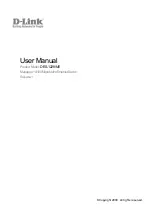
2-5
Cisco ASR 1000 Series Aggregation Services Routers Software Configuration Guide
OL-16506-10
Chapter 2 Using Cisco IOS XE Software
Using Keyboard Shortcuts
Using Keyboard Shortcuts
Commands are not case sensitive. You can abbreviate commands and parameters if the abbreviations
contain enough letters to be different from any other currently available commands or parameters.
Table 2-1
lists the keyboard shortcuts for entering and editing commands.
Using the History Buffer to Recall Commands
The history buffer stores the last 20 commands you entered. History substitution allows you to access
these commands without retyping them, by using special abbreviated commands.
Table 2-2
lists the history substitution commands.
Table 2-1
Keyboard Shortcuts
Keystrokes
Purpose
Ctrl-B
or
the
Left Arrow
key
1
Move the cursor back one character
Ctrl-F
or
the
Right Arrow
key1
Move the cursor forward one character
Ctrl-A
Move the cursor to the beginning of the command line
Ctrl-E
Move the cursor to the end of the command line
Esc B
Move the cursor back one word
Esc F
Move the cursor forward one word
1.
The arrow keys function only on ANSI-compatible terminals such as VT100s.
Table 2-2
History Substitution Commands
Command
Purpose
Ctrl-P
or the
Up Arrow
key
1
Recall commands in the history buffer, beginning with the most
recent command. Repeat the key sequence to recall successively
older commands.
Ctrl-N
or the
Down Arrow
key1
Return to more recent commands in the history buffer after
recalling commands with
Ctrl-P
or the
Up Arrow
key.
Router#
show history
While in EXEC mode, list the last several commands you have just
entered.
1.
The arrow keys function only on ANSI-compatible terminals such as VT100s.
















































